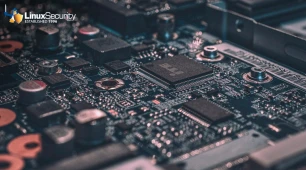
As a Linux security admin, you've likely spent countless hours fine-tuning your systems' defenses, but here's a reality check: Linux's inherent safety isn't just about firewalls and kernel updates. Often, the savvy users themselves serve as a frontline defense against malware. Unlike their Windows and macOS counterparts, Linux users tend to have a deeper understanding of their operating systems, enabling them to identify and avoid suspicious activity before it becomes a threat. This user knowledge cultivates a proactive approach to security that bridges the gap traditional measures might miss.
Moreover, the architecture of Linux itself plays a critical role in its resilience against viruses. With robust permission settings and sandboxing features, Linux ensures the impact is usually contained even if malware slips through. Add to that the complexity introduced by the vast diversity of Linux distributions—each with its nuances—and you've got a landscape that poses significant challenges for malware developers. Combined with Linux's relatively smaller market share and vigilant open-source community, these factors create an environment less hospitable to viruses. This multi-faceted approach to security sets Linux apart and offers peace of mind in your day-to-day operations.
Let's examine the various factors that contribute to your security from virus infections as a Linux user. I'll also examine the history of Linux viruses and the ongoing battle to secure our systems against them. While Linux users face comparatively lower risks, we are not immune to the virus threat, and remaining proactive and vigilant is critically important in preventing infections!
The Role of User Knowledge and Behavior
 One of the often-overlooked aspects of Linux security is the user base itself. Linux users usually have a stronger technical background and a more in-depth understanding of their systems. This knowledge empowers users to take proactive steps in safeguarding their machines. For example, they are more likely to recognize phishing attempts, avoid untrusted downloads, and understand the implications of running commands with superuser privileges.
One of the often-overlooked aspects of Linux security is the user base itself. Linux users usually have a stronger technical background and a more in-depth understanding of their systems. This knowledge empowers users to take proactive steps in safeguarding their machines. For example, they are more likely to recognize phishing attempts, avoid untrusted downloads, and understand the implications of running commands with superuser privileges.
This heightened awareness translates directly into a more secure operating environment. The conventional wisdom that security is only as strong as its weakest link takes on new meaning when that weakest link—often the user—is substantially more robust in the Linux ecosystem. Users who delve into open-source projects and educate themselves about system architecture naturally contribute to a safer computing environment. While not an invincible defense, this layer of informed vigilance is a significant deterrent to potential malware threats.
Robust Architecture and Permissions
Linux had long been recognized for its security. Its design puts extra protection measures in place to help make it incredibly resilient, such as using permissions and user roles to ensure greater protection than many other operating systems. Every action that could impact a Linux system requires explicit user consent. When installing new software, a user typically must provide their password, thus guaranteeing that no unauthorized programs slip through undetected.
Sandboxing is another key concept. Sandboxing isolates applications from critical system components and each other, and any malware infections are limited by being contained in the sandbox. This approach to risk mitigation ensures that one compromised app won't lead to wider system attacks.
Market Share and Diversity
Linux's relatively smaller market share is instrumental in its defense against viruses. Malware developers typically prioritize platforms with high potential for widespread impact. Windows dominates this field and thus often becomes the target for these attacks, followed by macOS. However, due to having fewer users, Linux remains less attractive to malicious code creators.
Additionally, the sheer diversity of Linux distributions (distros) presents potential attackers with another layer of complexity. Each distro may feature its setup, package management system, and default configurations, making it challenging to develop universal malware for each. Due to this fragmentation of attack surfaces on Linux platforms, malware developers must put forth much greater effort targeting Linux effectively - thus acting as a natural deterrent against attacks.
Community Vigilance and Open-Source Nature
 Linux's open-source nature fosters a community-driven approach to security. Thousands of developers scrutinize code, identify vulnerabilities, and submit patches. Thanks to this collaborative environment, security updates can be released much more rapidly than in proprietary systems. When vulnerabilities are discovered quickly, the community responds with patches and transparent communication of risks.
Linux's open-source nature fosters a community-driven approach to security. Thousands of developers scrutinize code, identify vulnerabilities, and submit patches. Thanks to this collaborative environment, security updates can be released much more rapidly than in proprietary systems. When vulnerabilities are discovered quickly, the community responds with patches and transparent communication of risks.
Many Linux distributions also utilize repositories--centralized locations from which users can securely download and update applications--to reduce malware risk and ensure software quality. Relying on reputable repositories instead of downloading software directly from random websites dramatically lowers the risk of inadvertent malware installation and increases safety for Linux users.
Understanding the Evolution of Viruses on Linux
The history of viruses on Linux is both interesting and instructive. Early on, virus threats to Linux systems were virtually nonexistent. Bliss, the second known Linux virus, appeared only as a proof-of-concept threat requiring root permission to execute (something most experienced users wouldn't grant anyway).
As Linux became increasingly prominent in servers and enterprise environments, more threats emerged. Instead of targeting desktop users exclusively, attackers started targeting Linux-based servers running web-facing applications. Malware such as rootkits and more sophisticated exploits began surfacing at this time.
Responding to emerging threats has been a challenge successfully met by the Linux community. Through platforms like SELinux (Security-Enhanced Linux) and AppArmor, the Linux operating system has built advanced security frameworks to defend against known and unknown threats. Furthermore, these tools provide fine-grained control over system access and application behavior, adding another layer of protection.
The Ongoing Battle
 Despite these advantages, no operating system is immune to threats, and vigilance remains essential. The sophistication of modern malware continues to grow, and Linux is not overlooked entirely by cybercriminals. The rise of IoT devices, many running lightweight Linux distros, presents new avenues for potential vulnerabilities that attackers might exploit.
Despite these advantages, no operating system is immune to threats, and vigilance remains essential. The sophistication of modern malware continues to grow, and Linux is not overlooked entirely by cybercriminals. The rise of IoT devices, many running lightweight Linux distros, presents new avenues for potential vulnerabilities that attackers might exploit.
As Linux security admins, the mission is to stay ahead of these evolving threats. Regular system updates, continuous education, and prompt application of patches are fundamental practices. Actively monitoring systems for unusual activity and staying engaged with the broader Linux community can provide valuable insights and timely warnings.
Our Final Thoughts on the Threat Viruses Pose to Linux Systems
In digital security, Linux presents a compelling case study for how a blend of user behavior, architectural robustness, community vigilance, and market dynamics can collectively create a safer computing environment. While no system is foolproof, the practical, layered defenses inherent in Linux—from user education and permissions to sandboxing and community engagement—offer a unique model of resilience.
Understanding these safety mechanisms and their importance is crucial for any Linux security admin. The history of viruses on Linux serves as both a cautionary tale and a testament to the community's ingenuity in facing threats head-on. By maintaining rigorous security practices and fostering informed user communities, we can continue to safeguard our Linux systems against current and emerging cyber threats.





















